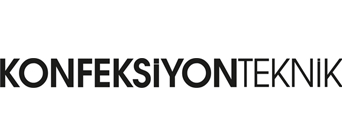Murat Eren / TETAŞ Genel Müdür Yardımcısı
Türkiye, geçmiş yıllarda yüksek cari açık dönemlerinde Konfeksiyon ve Hazır giyim sektörünü sorgulayan bir söylemle karşı karşıya kaldı. Günümüzde aynı konuşmalar yinelenmektedir. Ancak, bu sektörlerin ekonomik, sosyal ve küresel değer zincirine katkıları göz önüne alındığında, bu yaklaşımın kısa vadeli ve stratejik derinlikten yoksun olduğu görülüyor. Hazır giyim ve Konfeksiyon sektörü, Türkiye’nin ihracatında yer alan ilk 3 sektöründen biridir. Ülkenin farklı bölgelerine yayılmış üretim altyapısı, büyük bir istihdam oluşturma kapasitesi ve küresel pazarlardaki yerleşik ilişkileriyle bu sektör, ekonominin can damarıdır. Ancak, sektörün büyümesini ve sürdürülebilirliğini sağlayacak olan şey, geleneksel güçlü yanları yenilikçi yaklaşımlarla birleştirmek olacaktır. Sektörden uzaklaşmak yerine, teknolojik kazanımları geleneksel sektörlere aktarabilme kabiliyeti burada devreye giriyor. Örneğin, savunma sanayisinde geliştirilen ileri teknoloji çözümleri, akıllı tekstil ürünlerine dönüştürülebilir. Bu, yalnızca sektörü dönüştürmekle kalmaz, aynı zamanda katma değeri yüksek ürünler sayesinde ihracatın birim değerini artırır. Bu tür sinerji yaklaşımları, Türkiye’nin küresel rekabet gücünü artırabilir. Kendi teknoloji transferimizi sinerji oluşturarak, gerçekleştirilinceye kadar da bunu ithal teknoloji aktarımı ile hayata geçirebiliriz. . Üretimde kullanılacak olan otomasyonlar, yapay zeka ile çalışan yazılım ve sistemler, akıllı fabrika donanımları bunlara örnek konu başlıklarıdır. Dünya örnekleri de bu stratejinin doğruluğunu destekliyor. İspanya’nın Inditex gibi hazır giyim devi, inovasyonun, süreç yönetiminin ve markalaşmanın bir ülke ekonomisini nasıl ileri taşıyabileceğinin en güzel örneklerinden biridir. Firmanın sahipleri dünyanın en zengin kişisel servete sahip ilk 10 kişisi içinde yer almaktadırlar. Benzer şekilde, İtalya’da kişisel servet sıralamasında hazır giyim markalarının yer alması, geleneksel sektörlerin ne denli yüksek bir potansiyele sahip olduğunu göstermektedir. Bu başarı hikayelerinin temelinde, geleneksel bilgi birikimini inovasyonla birleştiren yaklaşımlar yatıyor. Türkiye’nin konfeksiyon ve hazır giyim sektöründen vazgeçmek yerine, bu sektörü yüksek teknolojili ürünlerle güçlendirmesi gerekiyor. Süreç inovasyonu, markalaşma ve tasarımın ön planda olduğu, teknoloji destekli dönüşüm stratejisi, sektörü daha rekabetçi ve sürdürülebilir hale getirecektir. Ayrıca, yerel üretim ve küresel tedarik zincirlerine entegrasyon açısından sektörün sunduğu avantajlar, Türkiye’nin ekonomik dengeleri açısından vazgeçilmezdir. Sonuç olarak, 2025 ve ötesinde Türkiye’nin hazır giyim ve konfeksiyon sektörüne yönelik stratejisi, bu sektörün varlığını sorgulamak değil, aksine onu yüksek katma değerli bir geleceğe taşımak olmalıdır. Bunu başardığımızda, yalnızca ihracat gelirlerinde değil, küresel pazarlardaki konumumuzda da büyük bir sıçrama göreceğimizden emin olabiliriz.
The strategic role of the apparel and ready-to-wear sector in 2025
Murat Eren / Deputy General Manager, TETAŞ
Turkey has faced discourse questioning the Apparel and Ready-to-Wear sector during periods of high current account deficits in previous years. Today, similar discussions are being repeated. However, considering the contributions of these sectors to the economy, society, and global value chains, it is evident that this approach is short-sighted and lacks strategic depth. The Apparel and Ready-to-Wear sector is one of the top three sectors in Turkey’s exports. With its widespread production infrastructure across different regions, significant employment creation capacity, and established relationships in global markets, this sector is the backbone of the economy. However, what will ensure the sector’s growth and sustainability is combining its traditional strengths with innovative approaches. Instead of distancing ourselves from the sector, the ability to transfer technological advancements to traditional industries is key here. For example, advanced technological solutions developed in the defense industry can be transformed into smart textile products. This not only transforms the sector but also increases the unit value of exports through high value-added products. These types of synergy approaches can enhance Turkey’s global competitiveness. We can achieve this synergy through technology transfer until we are able to generate our own. Automation, AI-powered software and systems, and smart factory equipment are examples of key topics in this regard.
Global examples also support the validity of this strategy. Spain’s Inditex, a giant in the ready-to-wear industry, is one of the best examples of how innovation, process management, and branding can advance a national economy. The company’s owners are among the top 10 wealthiest individuals in the world. Similarly, in Italy, the inclusion of ready-to-wear brands in the personal wealth rankings demonstrates the high potential of traditional sectors. At the heart of these success stories are approaches that combine traditional expertise with innovation. Rather than abandoning Turkey’s apparel and ready-to-wear sectors, the country must strengthen this sector with high-tech products. A transformation strategy supported by technology, with a focus on process innovation, branding, and design, will make the sector more competitive and sustainable. Furthermore, the advantages the sector offers in terms of local production and integration into global supply chains are indispensable for Turkey’s economic balances. In conclusion, Turkey’s strategy for the apparel and ready-to-wear sector in 2025 and beyond should not be about questioning the sector’s existence, but rather about taking it to a high value-added future. Once we achieve this, we can be confident that we will see a significant leap not only in export revenues but also in our position in global markets.

